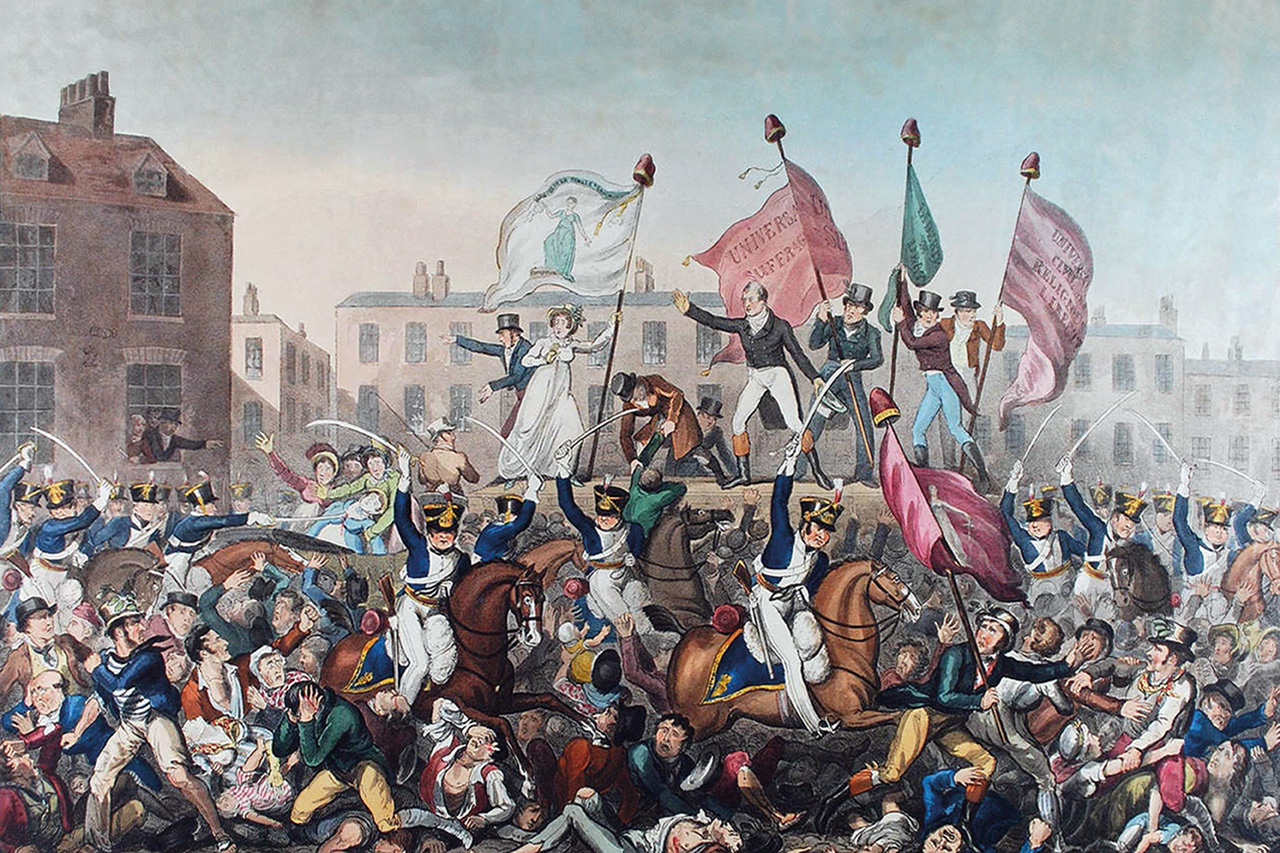The North has a proud history of protest. Recently the bicentenary of the Peterloo Massacre commemorated 70,000 people who demanded greater representation before being attacked by yeomen. Sheffield’s Peace Garden has a memorial to Samuel Holberry for his part in the January 1840 Chartists’ rising.
The 1984-85 miners’ strike lasted a whole year, with a key battle at Orgreave. In 1988, tens of thousands marched in Manchester in support of gay and lesbian people against Clause 28. More recently on a smaller scale South Yorkshire’s freedom riders demanded free travel for pensioners; the Rotherham 12 were acquitted after confronting far-right thugs; and this year saw occupation by Sheffield students in support of striking staff.
Beware, however the Police, Crime, Sentencing and Courts Act, which has now received Royal Assent. Promoted by Home Secretary Priti Patel, the preface to the bill claimed: “Protests are an important part of our vibrant and tolerant democracy.” But the act affords the police powers to limit how long a protest can be and outlaws noisy dissent. None of the rights won by protest that we now take for granted, such as the vote or trade union rights, were achieved through part-time, silent demonstration.
Patel is a massive fan of Margaret Thatcher. Since the Thatcher government the operational independence of the police has been undermined. After the UK riots of 1981, Lord Scarman’s review encouraged more liberal community policing, which received the public support of Thatcher’s Home Secretary, William Whitelaw. However, secretly and behind the scenes his government instigated and implemented a police manual for public order that provided the police with paramilitary powers. Published in 1983, the manual was available only to senior police officers. It can now be confirmed that Whitelaw privately sanctioned the manual. He even hosted a celebratory drinks party. Parliament was none the wiser.
Six months after the manual’s creation these secret powers were deployed for the first time at Warrington during the Stockport Messenger print workers’ dispute. New police formations to split the protest, snatch squad arrests and police in Land Rovers chasing pickets across waste land in the dark were as shocking as they were a surprise to the trade unionists. A few months later, during the miners’ strike short shields and batons were used for the first time, while horses charged into a crowd. The new tactics sanctioned police to “incapacitate” protesters, apparently just for being there.
Successive home secretaries consistently profess operational independence of the police during protest. Recently declassified papers give truth to this lie. During the miners’ strike Sir Brian Cubbon, a senior civil servant, had an integral role in assisting police operations and the level of charges against miners. He met West Yorkshire CID at the beginning of the strike and called the chief constable of South Yorkshire two weeks before the Battle of Orgreave.
The previous day Thatcher had discussed “support for the police efforts to bring more serious charges where appropriate”. By providing considerable funding for policing from the national purse and interfering in operational policing the Thatcher government further distorted the balance of power. Local democratic accountability of the police was pushed aside. These facts alone should be sufficient for the Orgreave Truth and Justice Campaign to secure the inquiry it has long been calling for.
The following decades were also characterised by political interference as an ever-closer relationship between government and police developed. Under the Blair administration, the Association of Chief Police Officers seemingly got what it asked for. Blair’s government’s relentless law making enacted 3,000 new criminal offences, one for every day it was in office. This approach by Labour facilitated confidence in the police to resort to kettling protesters.
Kettling was first applied against protesters on a mass scale in London in 2001. At the 2019 YouthStrike4Climate protests in Manchester, 13 and 14 year olds accused the police of using tactics that would deter them from protesting, including kettling, recording and gathering intelligence about them.
Governments have continued to vilify protesters, even when the police overstep the mark. With the introduction of the 2022 act and her condemnation of BLM protesters as “thugs and criminals”, Patel has exposed her loathing of all protest. It seems she refuses to countenance any dissent. As human rights barrister Michael Mansfield says, there is a “determination of successive governments to suppress the perceived threat posed by public demonstration”.
We need to let people protest, and to continue to do so creatively, to reclaim, nurture, protect and rebuild this long established right.
Matt Foot is a criminal defence solicitor. Morag Livingstone is an award-winning documentary filmmaker and author. Charged: How the Police Try to Suppress Protest by Foot and Livingstone is out on 24 May, published by Verso Books
Photo: The Peterloo Massacre in 1819 – 15 people were killed while protesting (Richard Carlile CC)



Leave a reply
Your email address will not be published.